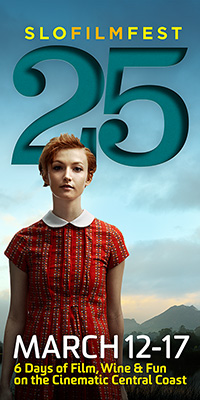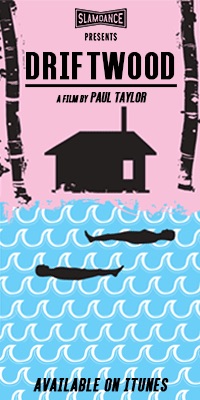 A view of the Palais red stairs before the madness begins on day 3.
A view of the Palais red stairs before the madness begins on day 3.
 The cast and crew of Cristi Puiu’s “Aurora” assembles on the Debussy stage with Cannes artistic director Thierry Fremaux. (Very tiny, for sure; this IPhone lacks telephoto.) “Aurora” isn’t in the black comic vein of Puiu’s “The Death of Mr. Lazarescu” or “Stuff & Dough”–it tracks the initially inexplicable behavior and actions of a man who works at a metal factory, and yet doesn’t seem to live exactly anywhere, yet also has multiple addresses he visits or habitates. He isn’t quite of this life, but one degree (or more) separate from everyone else he knows. Eventually, he assembles the parts to a gun, and proceeds to use it. In the end, Puiu (who directs himself, with a deliberately expressionless demeanor in roughly the first half and with increasingly virulent sarcasm in the latter scenes) constructs a slow-motion tragedy, but one entirely authored and directed by the character, who may or may not be acting out due to a terminal illness. (Which itself may be a feint, or the notions of a hypochondriac.) “Aurora” is a work grounded in physical reality while considering the enigmatic nature of human behavior. It resonates, and it’s impossible to stop thinking about it.
The cast and crew of Cristi Puiu’s “Aurora” assembles on the Debussy stage with Cannes artistic director Thierry Fremaux. (Very tiny, for sure; this IPhone lacks telephoto.) “Aurora” isn’t in the black comic vein of Puiu’s “The Death of Mr. Lazarescu” or “Stuff & Dough”–it tracks the initially inexplicable behavior and actions of a man who works at a metal factory, and yet doesn’t seem to live exactly anywhere, yet also has multiple addresses he visits or habitates. He isn’t quite of this life, but one degree (or more) separate from everyone else he knows. Eventually, he assembles the parts to a gun, and proceeds to use it. In the end, Puiu (who directs himself, with a deliberately expressionless demeanor in roughly the first half and with increasingly virulent sarcasm in the latter scenes) constructs a slow-motion tragedy, but one entirely authored and directed by the character, who may or may not be acting out due to a terminal illness. (Which itself may be a feint, or the notions of a hypochondriac.) “Aurora” is a work grounded in physical reality while considering the enigmatic nature of human behavior. It resonates, and it’s impossible to stop thinking about it.
 The scene in front of the Palais main entrance is always crazed during the festival, but this enormous Sumo-nurse, or whatever it is, may be enough to give small kids nightmares. The unknown passer-by on the left is not amused.
The scene in front of the Palais main entrance is always crazed during the festival, but this enormous Sumo-nurse, or whatever it is, may be enough to give small kids nightmares. The unknown passer-by on the left is not amused.
 This is the first of three panoramic views of the Croisette and the Cannes beach area, as seen from the steps of the Quinzaine headquarters at 5:30 pm.
This is the first of three panoramic views of the Croisette and the Cannes beach area, as seen from the steps of the Quinzaine headquarters at 5:30 pm.









READER COMMENTS